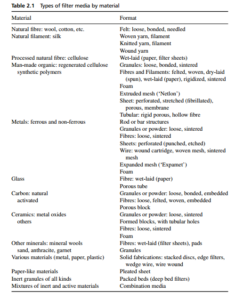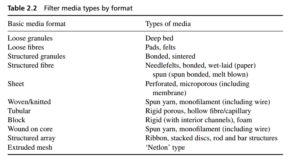0
-
An empty cart
You have no item in your shopping cart
envato-wordpress-toolkit domain was triggered too early. This is usually an indicator for some code in the plugin or theme running too early. Translations should be loaded at the init action or later. Please see Debugging in WordPress for more information. (This message was added in version 6.7.0.) in /var/www/wp-includes/functions.php on line 6121g5plus-darna domain was triggered too early. This is usually an indicator for some code in the plugin or theme running too early. Translations should be loaded at the init action or later. Please see Debugging in WordPress for more information. (This message was added in version 6.7.0.) in /var/www/wp-includes/functions.php on line 6121A filter medium is any material that, under the operating conditions of the fi lter, is permeable to one or more components of a mixture, solution or suspension, and is impermeable to the remaining components.
The retained components, the ones to which the medium is impermeable, may be particles of solid, droplets of liquid, colloidal material, or molecular or ionic species in solution, while the permeate (or fi ltrate) will normally be the suspending fluid or solvent, possibly together with some of the other components. (Note: this definition includes the diffusion processes of reverse osmosis and nanofiltration, which are not strictly fi ltration processes, because of their similarity to membrane
ultrafi ltration and microfi ltration, which are.)
It is true to say that any material that is porous or can be rendered porous or made into a porous structure, whether the pores are the size of a person’ s fist or smaller than a micrometre, can serve as a filter medium. However, as far as is reasonable, a fi lter medium should be strong (in tension at least), fl exible, resistant to corrosion and abrasion, easily manipulated into the required shapes and capable of being made with a range of porosities. These requirements cut down on the number of possible media, but still leave plenty of potential materials: inorganic (minerals, carbon, glass, metals and metal oxides/ceramics), and organic (natural and synthetic).
Each of these basic materials lends itself to one or more formats of filter media, as shown in Table 2.1, which gives the media formats for each of the materials from

which media can be made. A variant of this information is given in Table 2.2 , relating material form to the types of media in that format.

This Section describes filter media in general terms. More detail is available in Handbook of Filter Media (Derek B. Purchas and Ken Sutherland, 2002, 2nd Edition, Elsevier Advanced Technology, Oxford).
For further information, please click here.